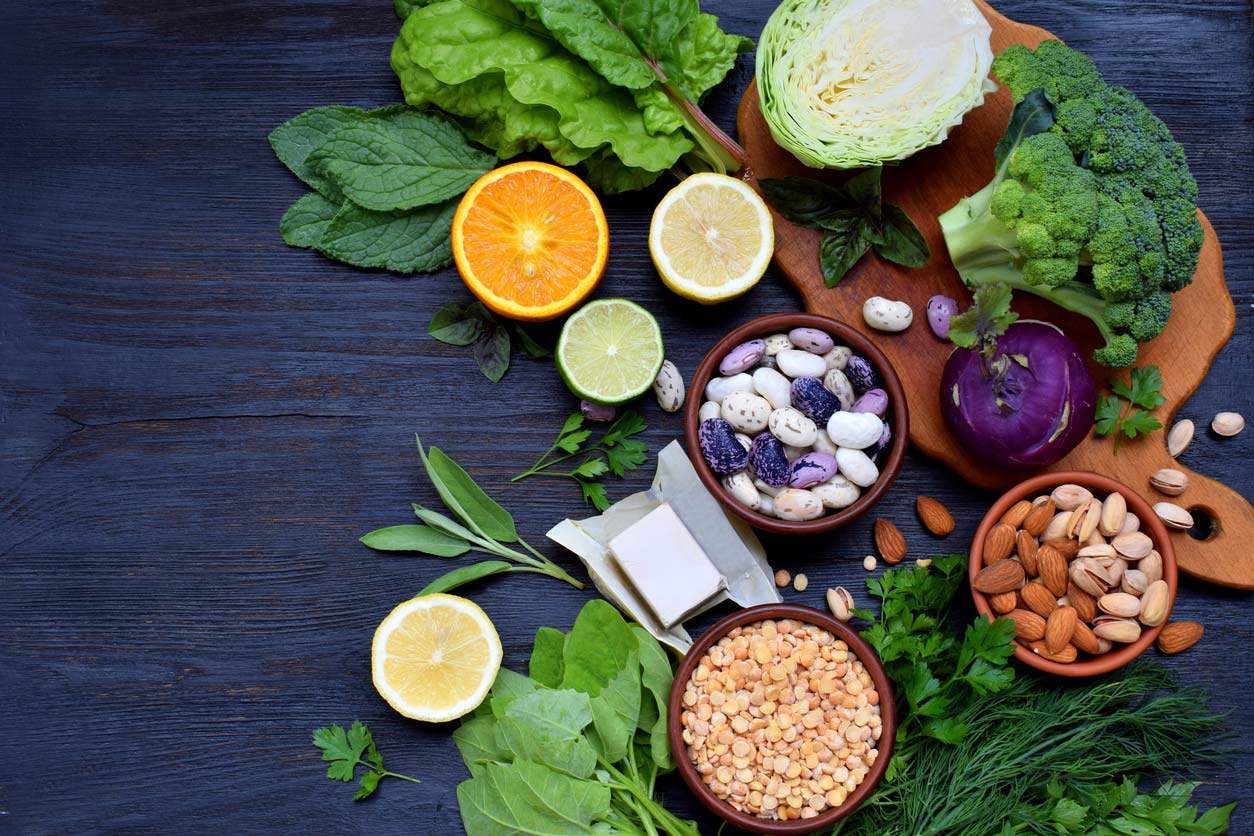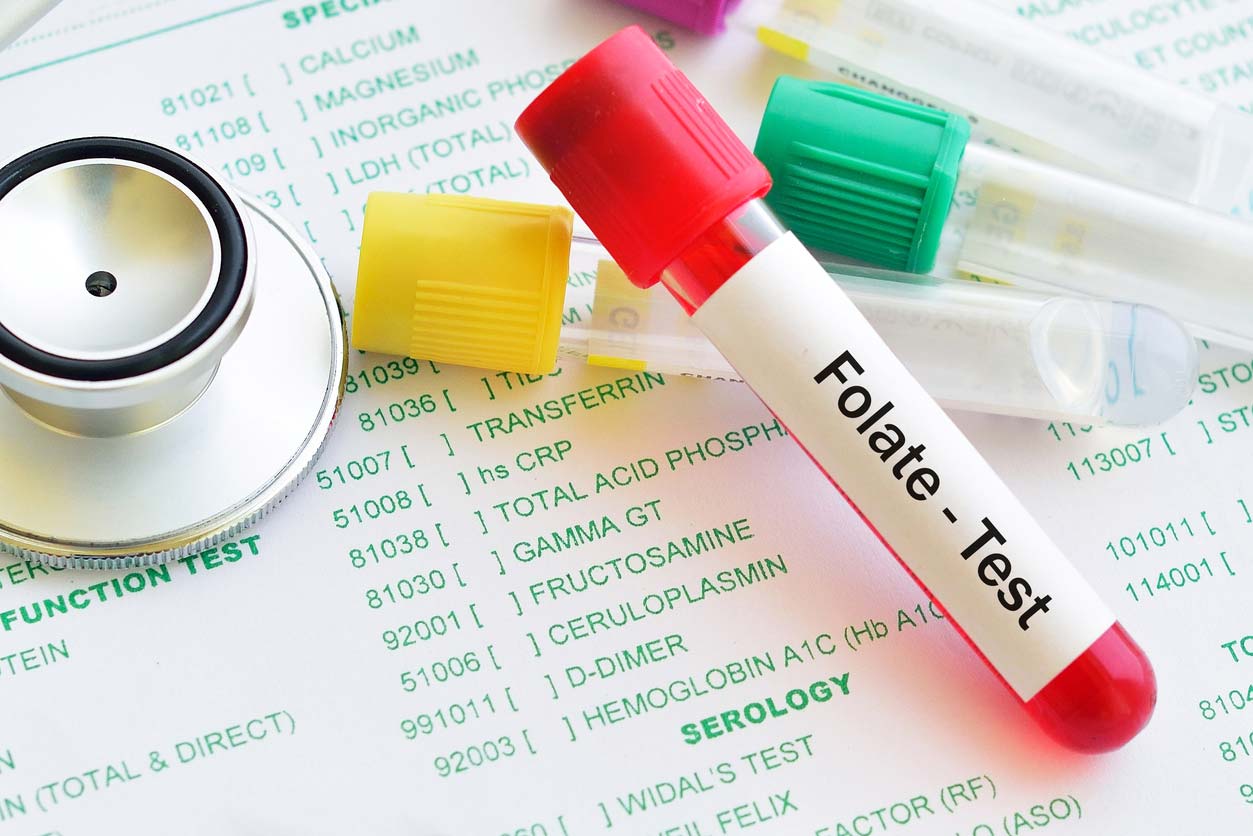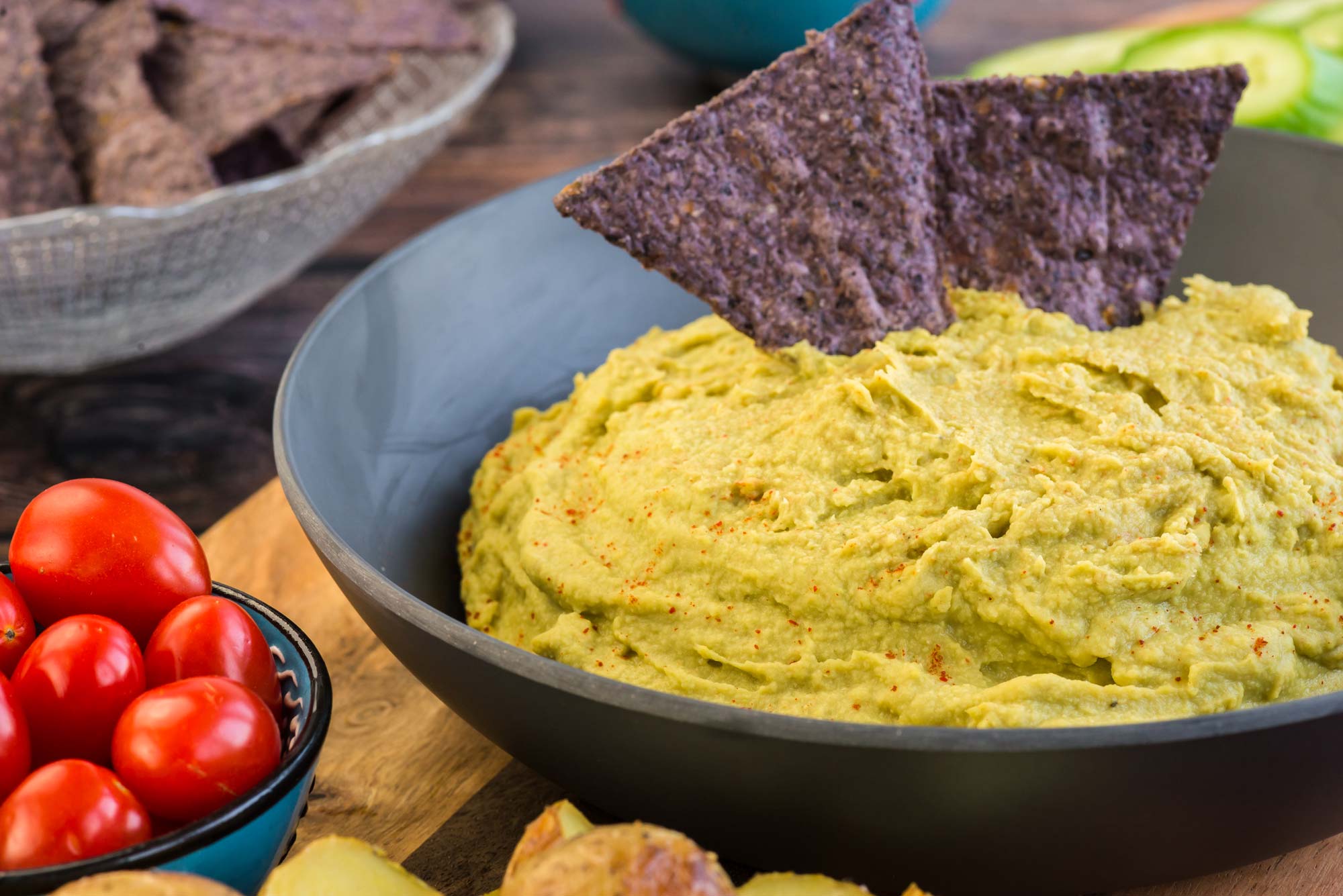Unless you’re a nutrition geek, you’ve probably only heard about folate as a vitamin of concern for pregnant moms because of its crucial role in fetal development. But the truth is that all of us, whether in the womb or not, need sufficient folate throughout our lives. So let’s explore the facts about folate, folate vs folic acid, daily requirements, and the nuances of this often misunderstood but critically important nutrient.
What is Folate?
Folate is a member of the large and sometimes confusing family of water-soluble B vitamins and is also called vitamin B9. It works closely with other B vitamins, especially B12 and B6. And it’s important in the formation of red blood cells, for the healthy growth and function of cells, and for protein and amino acid metabolism. Having enough folate is especially crucial in pregnancy.
The History of Folate
If you’re confused about folate, you’re in very good company, historically speaking. Folate was discovered only in the 1930s, principally by Lucy Wills, a medical doctor working to prevent anemia (low levels of oxygen in the blood) in pregnant women. She noticed that certain groups of women were far more prone to anemia than others. And she soon discovered that what was then the “gold standard” treatment for that condition, pure liver extracts chock full of vitamin B12, didn’t help. These women were suffering not from pure “pernicious anemia,” which is caused by a lack of B12, but another form of anemia that formed even in the presence of sufficient B12.
Lucy argued that there must be some other nutrient involved, which she called the “Wills factor.” And in the 1940s, it was identified as our friend folate. Lucy discovered that the cheapest way to treat these anemic pregnant women was with a salty British yeast extract spread called Marmite, which you’ve either never heard of, or have very strong opinions about.
Folate vs Folic Acid

Curious about the difference between folate vs folic acid? While these two terms are often used interchangeably, they’re not the same thing.
Folate refers only to the naturally-occurring form of vitamin B9. It’s found in whole foods and exists in the form of tetrahydrofolate (THF), which, in case you happen to love geeking out on chemistry, has the chemical structure C19H23N7O6.
On the other hand, folic acid is the major synthetic — or human-made — and totally oxidized form of vitamin B9. Because oxidation makes it a more stable compound, folic acid is used to fortify foods. In practice, this usually means that it’s one of the micronutrients that gets added back to highly processed foods, to replace some of the original nutrients that were lost in processing. Folic acid was first manufactured in 1945 and has been added to all widely-consumed enriched grain products in the US, like breads and pastas, since the 1990s.
Folic acid is also the form of vitamin B9 found in most dietary supplement formulations, although some newer multivitamins do contain whole food-derived folates. For you chemists (or Breaking Bad fans) out there, supplements that include folate usually deliver it in its monoglutamyl form, called 5-methyl-THF and abbreviated as 5-MTHF or L-methylfolate.
Folic Acid is Metabolized Differently
Unfortunately, although the terms “folate” and “folic acid” are often used synonymously, there are important differences between them. Folic acid can help your body to meet its basic needs for vitamin B9. But when folic acid isn’t metabolized properly in the body, it can build up in the bloodstream and cause problems, even with a small daily dose of 400 mcg. While scientists are still unsure if there’s a direct role, there does appear to be an association between high amounts of unmetabolized folic acid in blood and a higher risk for cancers. Additionally, having a lot of folic acid in the blood can make it harder to detect a deficiency of vitamin B12, especially among older adults.
As far as we know, these problems are unique to folic acid and do not appear to be concerns when you eat folate.
How Much Folate Do You Need?
The amount of folate you need depends on your age and pregnancy status.
The Recommended Dietary Allowances (RDA) for folate is measured in micrograms (millionths of a gram) using what are called dietary folate equivalents (DFE). This allows for the conversion of various forms of folate and folic acid into one number, an important step since more vitamin B9 is absorbed from fortified foods and supplements than from whole foods. In other words, you need more B9 when it’s folate, coming from natural sources, than you do if it’s folic acid, coming from fortified sources.
If we’re crunching numbers, 1 mcg of DFE (again that’s “dietary folate equivalents”) is equivalent to both 1 mcg of folate from whole foods, or 0.6 mcg of folic acid from fortification or supplements. As an example, 400 mcg DFE — the recommended amount for most adults — can be met by eating either 400 mcg of folate from foods or 240 mcg of folic acid from your multivitamin.
The RDA for folate per age group is listed below. Note that there are no differences between males and females in each age category, with the exception of pregnant and lactating women.
- 0-6 months: 65 mcg DFE
- 7-12 months: 80 mcg DFE
- 1-3 years: 150 mcg DFE
- 4-8 years: 200 mcg DFE
- 9-13 years: 300 mcg DFE
- 14-18 years: 400 mcg DFE
- 19+ years: 400 mcg DFE
- Pregnancy: 600 mcg DFE
- Lactation: 500 mcg DFE
What Are The Best Sources of Folate?

Before I give you the answer, let’s test your Latin: where does the word “folate” come from? If you thought of foals (baby horses), you’re on the wrong track. The word “folate” originates from the Latin word “folium”, which means leaf, as in foliage. This makes sense when you examine what types of foods tend to contain the most natural folates.
Some of the most folate-rich food sources are leafy green and cruciferous vegetables, as well as tofu and legumes (beans, peas, and lentils).
Below are some fantastic folate-rich foods to include in your diet, plus how much vitamin B9 they contain.
- Broccoli, 1 cup cooked: 78 mcg
- Collard greens, 1 cup cooked: 177 mcg
- Black-eyed peas, 1 cup canned: 122 mcg
- Lentils, 1 cup cooked from dried: 358 mcg
- Asparagus, 4 spears cooked: 88 mcg
- Spinach, 1 cup cooked: 263 mcg
- Split peas, 1 cup cooked from dry: 127 mcg
- Tofu, ¼ block: 27 mcg
Folate bioavailability varies substantially, depending on where you’re getting it from. The bioavailability of folate naturally present in healthy foods like these is around 50%. This means that about half of what you consume this way is absorbable and ready to be used by your body.
The EPIC-Oxford Study showed that vegans had the highest amounts of folate in their bodies. But simply following a vegan diet doesn’t necessarily guarantee that you’re getting enough folate. A box of Oreos washed down with a liter of Fresca (I know, a horrifying combination) may be vegan, but it won’t meet your folate needs. Since there’s not much folate in most animal products, vegans have the upper hand – but only if they base their diet around folate-rich plant foods.
Furthermore, folate metabolism needs vitamin B12 to occur properly, so getting enough B12 is also crucial.
6 Benefits of Folate (and other forms of Vitamin B9)

Here are some of the best-known health benefits of folate.
1. Supports healthy pregnancy.
As we’ve seen, folate is best known as a key nutrient during pregnancy. A healthy folate status contributes to the healthy development of the fetus. It helps prevent the neural tube birth defects spina bifida and anencephaly. And since the FDA began requiring folic acid fortification of foods in 1998, the birth prevalence of neural tube defects in the US has decreased by 35%. Intriguingly enough, this is one place where supplementing with folic acid may be more beneficial than supplementing with other forms of B9. While numerous studies have found that folic acid supplementation decreased neural tube defects, there haven’t (yet) been any scientific studies that have shown that supplements containing other types of folate can help prevent them.
2. Protects against heart disease and stroke.
Folate, and other B vitamins, help your body to metabolize homocysteine. If homocysteine levels get elevated, they can increase the risk of heart disease. So you ideally want your homocysteine levels to be nice and low. Your body uses folate and other B vitamins to help it convert homocysteine into cysteine or methionine – both of which are good for you. Hooray for folate!
Plus, supplementation of folic acid has been shown to significantly reduce the risk of having a stroke in people with high homocysteine levels (which you now know is not a good thing to have). In a 2018 randomized controlled trial among nearly 11,000 Chinese hypertensive adults, researchers found that those with a low platelet count and high homocysteine levels experienced a 73% reduction in their risk of a stroke when they took folic acid supplements.
3. Protects bone health.
Elevated levels of homocysteine aren’t just problematic for your heart. It turns out that they can also cause problems for your bones. High levels of homocysteine have been implicated in the development of bone diseases like osteoporosis, in which the bones become porous and prone to fracturing. Once again though, it’s folate to the rescue, as it (along with some of the other B vitamins) can play an important role in bringing down homocysteine levels.
4. May have anticancer properties.
Studies have suggested an inverse association between folate status and risk for cancers of the bladder, breast, cervix, ovaries, esophagus, stomach, lungs, pancreas, and colon. In other words, people who have plenty of folate seem to have lower risk of many forms of cancer. Why?
Firstly, researchers believe that adequate folate intake may slow cancer development through its effects on DNA replication and cell division.
And secondly, sufficient folate may help reduce the risk for arsenic toxicity. Arsenic is a known human carcinogen, which many of us are exposed to via drinking water and certain foods, like rice. Arsenic metabolism depends on folate, so if folate is lacking, this may result in a higher risk for arsenic toxicity — and ultimately cancer.
But this is another place where folate and folic acid may have different effects because high doses of supplemental folic acid have not been shown to have a protective effect against cancer. And several studies have found that folic acid supplementation could actually raise the risk for prostate cancer.
5. May help boost your mood.
Research suggests that folate supplementation can be a safe and effective adjuvant therapy for some individuals with major depressive disorders. By “adjuvant,” I mean that it can help other drugs work better. Here’s how: Folate appears to play a role in the synthesis of serotonin, the “feel good hormone”. Some researchers have found a benefit to taking methylfolate along with an antidepressant, noting that it increases the medication’s effectiveness in improving mood.
6. May improve cognitive function.
Having low levels of folate and other B vitamins has been associated with worsened cognitive function among older adults. This is especially true when homocysteine levels are also high which is more likely in the event of folate and B vitamin deficiencies. Many researchers believe that inadequate folate intake may lead to a higher risk for cognitive impairment and dementia later in life.
Folate Deficiency

Folate deficiency is not common, but some groups are at greater risk than others. For example, individuals with a very common genetic mutation — called MTHFR (in case you’re looking for a big win in a game of Boggle, that’s methylenetetrahydrofolate reductase) — have an impaired ability to convert folate to its active form, called 5-MTHF. Up to 40% of people in the US have this genetic mutation.
Because symptoms of MTHFR vary so much, many people are unaware that they have it unless they’ve specifically had genetic testing done for it. MTHFR can result in high levels of unmetabolized folate as well as homocysteine circulating in the bloodstream. If this goes unmanaged, it can result in a deficiency of folate and potentially other nutrients as well.
Fortunately, there’s an answer for people with the MTHFR mutation. And that is to take folate in the form of methylated folate. If you’re taking a supplement, look for one that says: 5-MTHF.
Folate deficiency can also be seen in cases of renal failure. This is because chronic kidney disease alters folate metabolism and impairs intestinal absorption of folate.
Folate Inadequacy
What’s more common than a full-on folate deficiency is what is known as folate inadequacy. In other words, simply not consuming enough folate to optimize its health benefits in the body. People at most risk for inadequate folate intake appear to be those with substance abuse disorders, smokers, pregnant women, and those with digestive disorders or other nutrient malabsorption conditions.
Testing for Folate
If you think you should be tested for folate deficiency, this is something to discuss with your healthcare provider. A folate deficiency can be detected in a routine blood test, or CBC panel, often done at annual wellness exams. Any abnormalities in your red blood cell counts — which fall into a normal range of 140-960 ng/mL — may indicate a folate issue.
A B12 and folate blood test can also be conducted. If this test is done on your blood plasma, a normal range for folate is 2-10 ng/mL. Generally, interpretations of these numbers and how they relate to your folate status should be relayed to you by your health care provider. UltaLabTests offers a B12 and folate test that you can order online. For more information about it, click here.
Folic Acid Risks & Interactions
There is no known risk from consuming too much folate from whole plant foods. But there are some bad things that could happen if we get too much folic acid. For instance, excessive intake of folic acid can result in the appearance of unmetabolized folic acid (UMFA) circulating in your blood. High amounts of UMFA may decrease cognitive function, increase the risk for anemia and related complications, and even impair immune function, especially among older adults.
Over time, if you also have a vitamin B12 deficiency (which up to 15% of the population does), UMFA can cause neurological damage. This has been seen with folic acid doses of 5,000 mcg (5 mg) and above. As such, it’s generally recommended for adults to limit their intake of folic acid through supplemental and fortified sources to no more than 1,000 mcg (1 mg) per day.
While some studies suggest a possible protective effect of folic acid supplementation against autism spectrum disorder (ASD), others have concluded that high blood levels of synthetic and unmetabolized folic acid during pregnancy actually raise the risk for ASD. More research in this area is needed, but it does highlight the importance of evaluating sources and amounts of vitamin B9 consumed during pregnancy.
Folic acid may also interact with certain medications. For example, taking folic acid supplementally to treat folate deficiency can reduce the efficacy of certain antiepilepsy drugs. Folic acid may also interfere with anticonvulsants, cholesterol-lowering drugs, methotrexate (a chemotherapy agent), sulfasalazine (a treatment for ulcerative colitis), pyrimethamine (an antimalarial), trimethoprim (an antibiotic), and triamterene (a blood pressure medication).
Folate-Rich Recipes
As you’ll see below, getting plenty of naturally-occurring folate through food isn’t difficult when you’re consuming whole plant-based food ingredients. Green Pea Hummus provides 25 percent of your estimated folate needs in just one serving while Lentil Spinach Dal packs your entire day’s worth in a serving. Not to mention, they taste delicious and are simple to make! Add the Lemon Thyme Brussel Sprouts to your recipe library and enjoy this folate-filled side dish with grilled tofu, as a part of a grain bowl or alongside mashed potatoes and tempeh.
1. Green Pea Hummus

Get a triple whammy (in the best way) with this Green Pea Hummus that’s packed with folate from the green peas, avocado, and chickpeas. In fact, you can meet 25 percent of your folate needs in just one serving of this creamy and tasty spread. Enjoy it on whole-grain crackers, in lunch wraps, or as a raw veggie dip.
2. Lemon Thyme Brussel Sprouts

One-half cup of Brussels sprouts can provide almost 50 micrograms of folate. (And, if you’re a Brussels lover, you might not stop at just half a cup!) Lemon and thyme give these Brussels sprouts both energizing (lemon) and grounding (thyme) qualities, making them an ideal snack or side for your body and soul.
3. Lentil Spinach Dal

Did you know that one cup of cooked lentils contains almost all of your folate needs for the day? That’s a lot of naturally occurring folate in one humble plant-based ingredient (and just one of many reasons why lentils top our list of fave plant-based foods). Add spinach and tomatoes to make a folate-full dish that is flavorful and delicious with fragrant spices and earthy herbs.
Folate is Fabulous

Folate is an important B vitamin and works together with vitamin B12 to protect your health. Although folate is often discussed interchangeably with folic acid, folic acid is a synthetic form of folate that has both benefits and risks. You can get most or all of the folate you need from delicious plant-based foods. Supplementation with folate or folic acid may be beneficial in some cases, especially if you’re a woman of child-bearing age or otherwise at risk of deficiency. But for most people, folate from food feels favorably fabulous.
Tell us in the comments:
- What sources of folate do you already get through your diet? What are some new ones you could add?
- Do you take any supplements that contain folic acid or folate?
- Have you ever had your folate levels checked?
Feature image: iStock.com/alvarez

